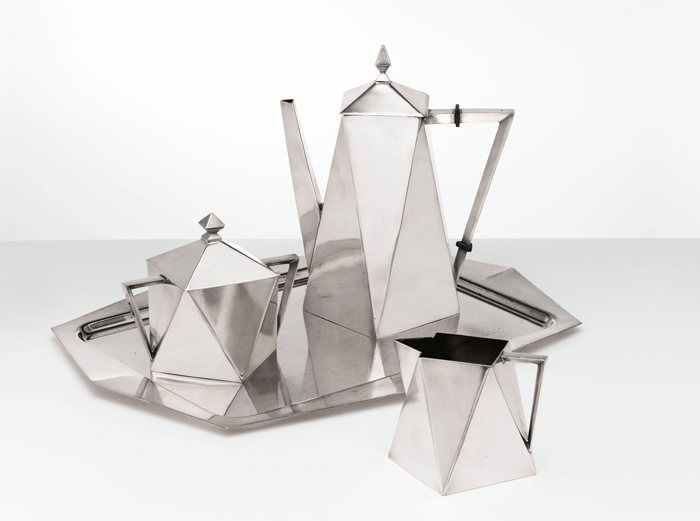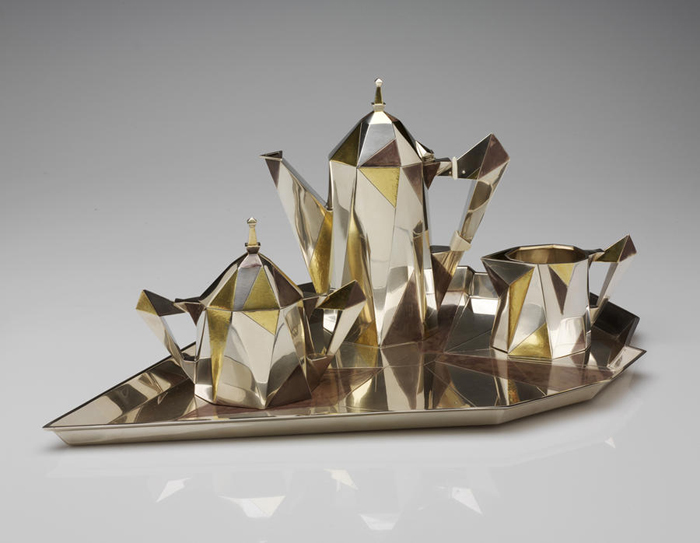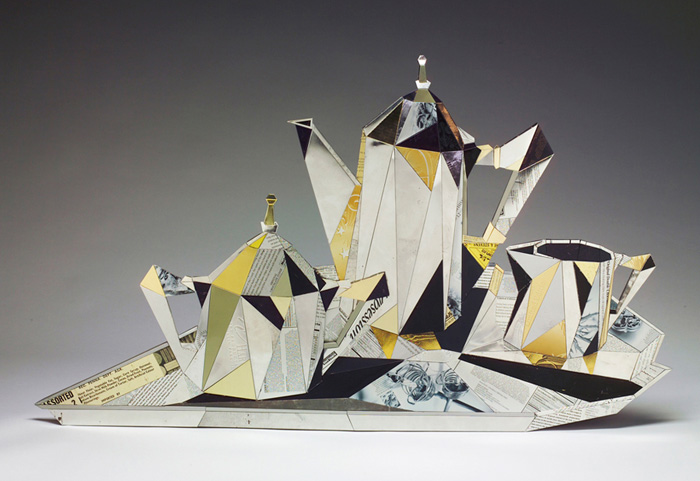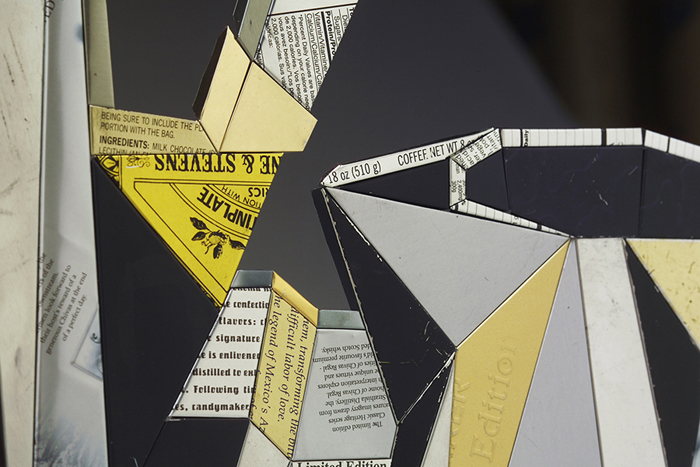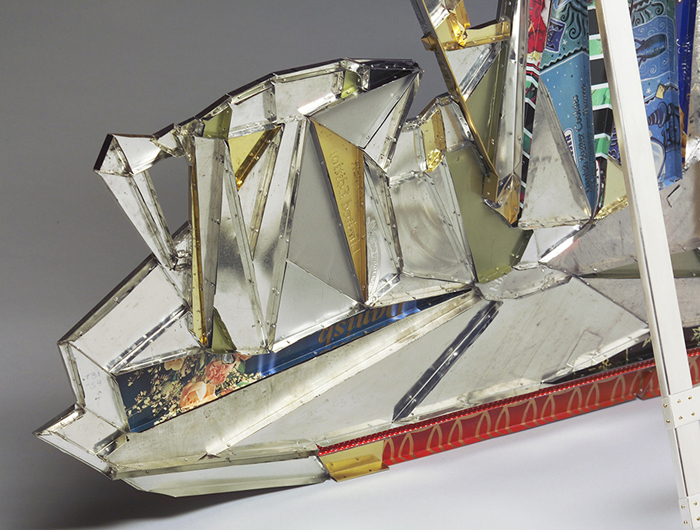When we discovered Cubism, we did not have the aim to discover Cubism. We only wanted to express what was in us.[i]-Pablo Picasso
Pablo Picasso and Georges Braque invented Cubism around 1907 in Paris. It is considered one of the most significant artistic innovations of the twentieth century. This revolutionary style “emphasized the flat, two-dimensional surface of the picture plane” and “presented a new reality…that depicted radically fragmented objects.”[ii] Cubists “reject[ed] the traditional techniques of perspective, foreshortening, modeling, and chiaroscuro”[iii] and they “refut[ed] time-honored theories that art should imitate nature.”[iv] In essence, artists like Picasso and Braque “refocused attention away from what was being represented and toward how it was being represented.”[v]
Cubism initiated a range of developments that could be felt not only in the visual arts, but also in music, literature, fashion, architecture, and the decorative arts.[vi] From the Art Deco style to influential movements such as Futurism and Dada, Cubism’s influence was “far–reaching and wide–ranging.”[vii] There are many works within the Kamm Teapot Collection that have been impacted by Cubism. For this blog post we will focus on two examples: an Elwood North Cornell coffee service and a Harriete Estel Berman sculpture. Both works pay homage to Erik Magnussen’s Cubic Coffee Service from 1927.
Erik Magnussen (1884-1961) and the Cubic Coffee Service
In 1925 Danish designer Erik Magnussen was hired by the Gorham Manufacturing Company of Providence, Rhode Island to help modernize their silverware line.[viii] Initially, he primarily developed designs that reflected his Danish training and background. This was a huge “departure” from the “Colonial Revival styles that dominated Gorham’s production.”[ix] Then, two years after Magnussen’s arrival, he made a radical leap conceiving and executing Cubic Coffee Service.
This sterling service, which includes a coffeepot, creamer, sugar bowl, and tray, contains oxidized and gilded silver along with touches of ivory. Numerous angular planes and fractured geometric shapes inspired by Cubist paintings, sculpture, and European silverwork cover its surface.[x] In 1928 Gorham said that these forms were “based on tall buildings seen from various perspectives and from sun shadows on set-back skyscrapers.”[xi] For this reason, they also referred to Magnussen’s design as the Lights and Shadows of Manhattan.[xii] Although this service was too avant-garde for some customers, it “…position[ed] Gorham as the vanguard of modern design among American silver firms.”[xiii] Currently Magnussen’s iconic service is part of the Rhode Island School of Design Museum’s collection and is on view in Gorham Silver: Designing Brilliance, 1850–1970.[xiv]
ELWOOD NORTH CORNELL (AMERICAN, 1889 – 1957)
In late 1927 Gorham displayed Magnussen’s Cubic Coffee Service in their showroom on Fifth Avenue in Manhattan. The display “caused a sensation” and the intense publicity quickly “provoked a profusion of manufactured imitations.”[xv] Elwood North Cornell, a manager in Middletown Silver Company’s New York Office, was responsible for one of these reproductions and by 1928 he had filed for a design patent.[xvi]
The Kamm Collection has an impressive example of Cornell’s version for Middletown. Called the Modernistic Coffee Service, it contains a coffee pot, creamer, sugar pot, and tray. At first glance, the resemblance to Magnussen’s design is striking. However, upon closer examination, it is apparent that each form has been simplified perhaps to make manufacturing easier. Instead of numerous fractured shapes and sharp angles, Cornell uses triangular faceted walls laid side by side. This service also lacks the gilding, oxidation, and ivory seen on Magnussen’s version. Nevertheless, with this design, they successfully capture elements of Cubism and the Art Deco aesthetic.[xvii] Middletown Silver, who usually took a more conservative approach stylistically, made a radical departure with Cornell’s service. Very few examples of this work survive. This might suggest that the design “met a tepid consumer response” when it was introduced to the public.[xviii]
HARRIETE ESTEL BERMAN (AMERICAN B. 1952)
Contemporary artist Harriete Estel Berman utilizes recycled materials such as salvaged tin to create jewelry, sculpture, and Judaica.[xix] Her work, which often resembles a “patchwork of colors, images, and text,” comments on material culture as well as our consumer society.[xx]
In 2004 Berman completed a metal sculpture which she titled Cubist Coffee Service. This work, which is in the Kamm Collection, provides a fresh perspective on Magnussen’s iconic design. Berman says she noticed “photographic reproductions of this famous coffee set always show[ed] the same side.”[xxi] Her version “…comments on the situation in which the photographic image is more famous than the actual object.”[xxii] Cubist Coffee Service plays with the eye. It might look three-dimensional, but in actuality it is almost “completely flat, like a photograph.”[xxiii] Furthermore, Berman says “the different colors of [the]metallic tin cans along with the text [are] used to convey the shadows, facets, reflections, and dimensions of the original object.”[xxiv] Sterling silver, a material so prevalent in Magnussen’s set, is only used to create the easel stand holding up the sculpture in the back.
With this work Berman explores perspective, presentation, and how an object is perceived. She also digs deeper asking questions about value. For instance, Berman asks, is value determined by the materials used, its maker, or by marketing and consumption?[xxv] These questions certainly broaden the scope and push us to reflect upon not only her sculpture, but Magnussen and Cornell’s work as well. Berman’s version of the Cubic Coffee Service continues to build upon what the Cubists started over a hundred years ago.
Further Reading/Viewing:
Erik Magnussen. Cubic Coffee Service. November 28, 2019. (Video of work and drawings)
Gordon, John Stuart. A Modern World: American Design from the Yale University Art Gallery 1920-1950. New Haven, CT: Yale Art Gallery in association with Yale University Press, 2011.
Gorham Silver: Designing Brilliance 1850-1970. RISD Museum.
Harriete Estel Berman’s website.
Holt, Steven Skov and Mara Holt Skov. Manufactured: The Conspicuous Transformation of Everyday Objects. San Francisco, CA: Chronicle Books, 2008.
Sotheby’s New York. 20th Century Design. New York: Sotheby’s, 18 December 2013. Auction catalog.
Stern, Jewel. Modernism in American Silver: 20th Century Design. New Haven, CT: Yale University Press, 2005.
Who was Erik Magnussen? Antiques Roadshow. PBS. November 4, 2019.
Williams, Elizabeth A., ed. Gorham Silver: Designing Brilliance 1850-1970. New York, NY: Rizzoli Electa, 2019.
Notes:

